Early this month, my wife and I spent 3-weeks in Japan with our 3-year-old son. Our second son is only 10 months old and didn't join the trip. We felt it would be hard to keep up with his feeding and sleeping schedule with the intensity of the trip, so he stayed home with his grandparents.
My wife and I believe that travelling is the best education we can give our children. This was our first multi-week trip with our elder son (we've made a few shorter trips to Vietnam, Sri Lanka, and New Zealand before). I think three years is the best age to start long-trips, as they are becoming curious about the world around them. Also, logistically, lot less of a burden for us (they can eat different food, adjust their sleep schedules, and walk for a bit if convinced with the right rewards 🍦).
Japan is the perfect destination for travelling with a toddler. It offers an unlimited supply of excitement for toddlers and their parents. Plus, it is super convenient and affordable (at least when we booked flights and hotels in late 2024).
Planning and itinerary
My wife deserves full credit for sequencing the itinerary and planning the budget. Since this was our first time in Japan, we pretty much followed the golden route, but we did it in reverse order (arriving in Osaka and departing from Tokyo). We pre-planned only a few activities and left plenty of time for spontaneous experiences (and meltdowns).
We arrived in Osaka during the first week of May, which coincided with Golden Week in Japan. As a result, Osaka was packed with local tourists for that weekend. We've had our trains reserved and pre-purchased tickets for attractions, so we didn't experience much chaos as "travel influencers" warn about Golden Week.
May is a good month to travel to Japan. You won't see any cherry blossoms, but the weather is nice (moderate 20-25C temperatures and no heavy rains). Sunset was around 7 pm, so we got longer days.
This was our itinerary for the 3 weeks with pre-booked activities:
Week 1 (first week of May) - Arrive and Stay in Osaka
- We stayed near Tenojii Station (an interchange with access to both metro and JR lines)
- Day trip to Hiroshima
- Osaka Aquarium
- Osaka Castle (wouldn't recommend going inside the Castle - crowded, not accessible with prams and also not that interesting. Gardens outside are beautiful and a great spot to picnic. You only need a ticket to visit inside the Castle.)
Week 2 - Kyoto
- We stayed near Gojo Station (one stop from Kyoto Station)
- Day trip to Uji (Japan's Matcha Capital)
- Kyoto Rail Museum
- Stay at a Ryokan in Kinosaki onsen (2-hour train ride from Kyoto)
Week 3 - Tokyo
- We stayed in Roppongi Hills (Roppongi-Itchome metro station)
- TeamLabs Planets
- TeamLabs Borderless
- Day trip to Mount Fuji
- For the last night, we stayed in Henna-Na Hotel, Haneda (front-desk staff are robots and dinosaurs. Plus, they have a free shuttle bus to the airport)
Hiroshima Peace Memorial Museum
This one hit me harder than I expected. It starts with a simulation of the A-bomb being dropped into Hiroshima, which fascinated my son.
Then it moves on to show the devastation it caused. My son started asking, "Daddy, what happened to all the people? Did they get a big ouchie?" I wasn't prepared to explain to him the concept of death.
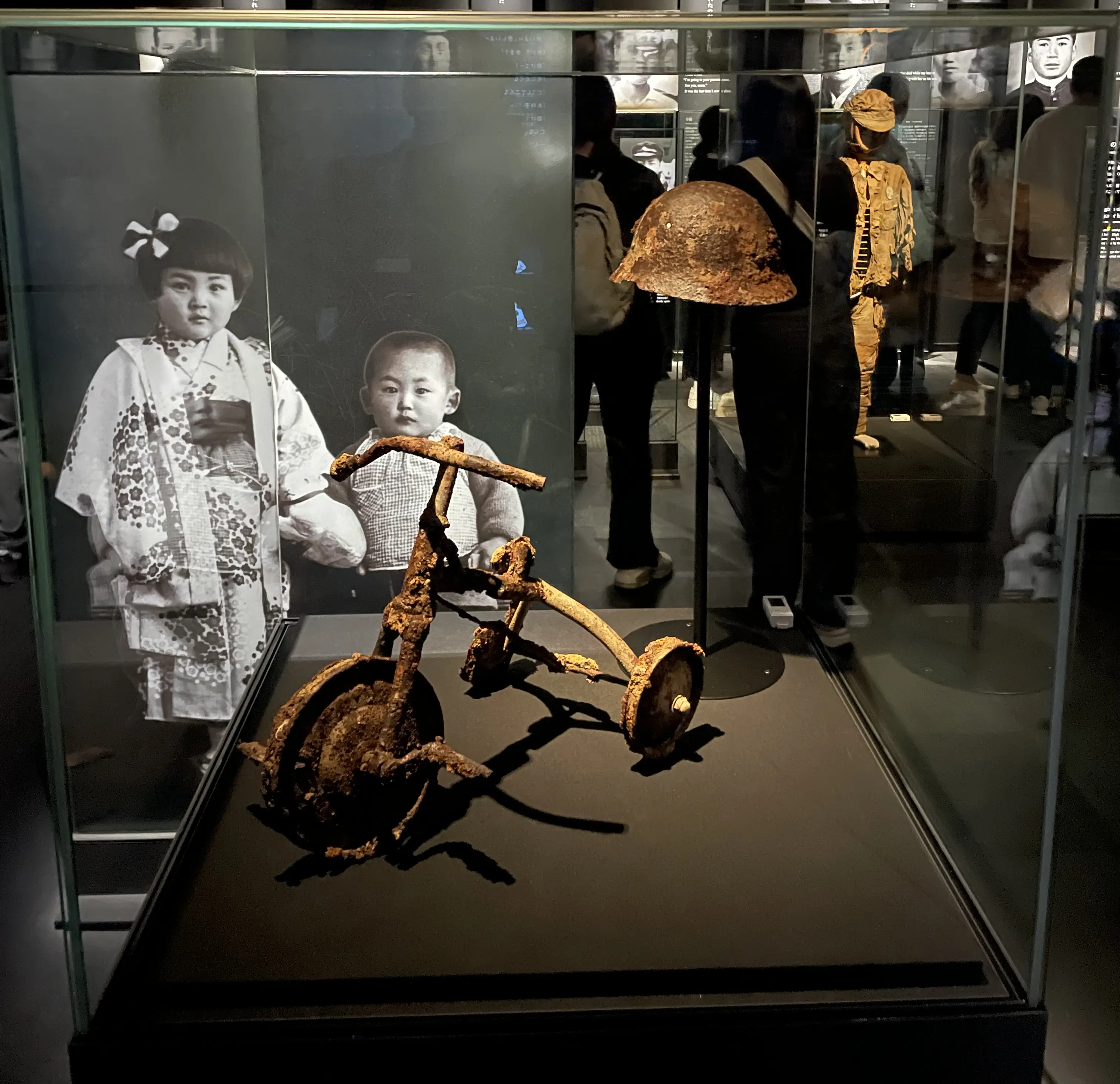
Then we came to this exhibit of a tricycle. "Daddy, it looks like my bicycle. What happened to it?" I was lost for words.
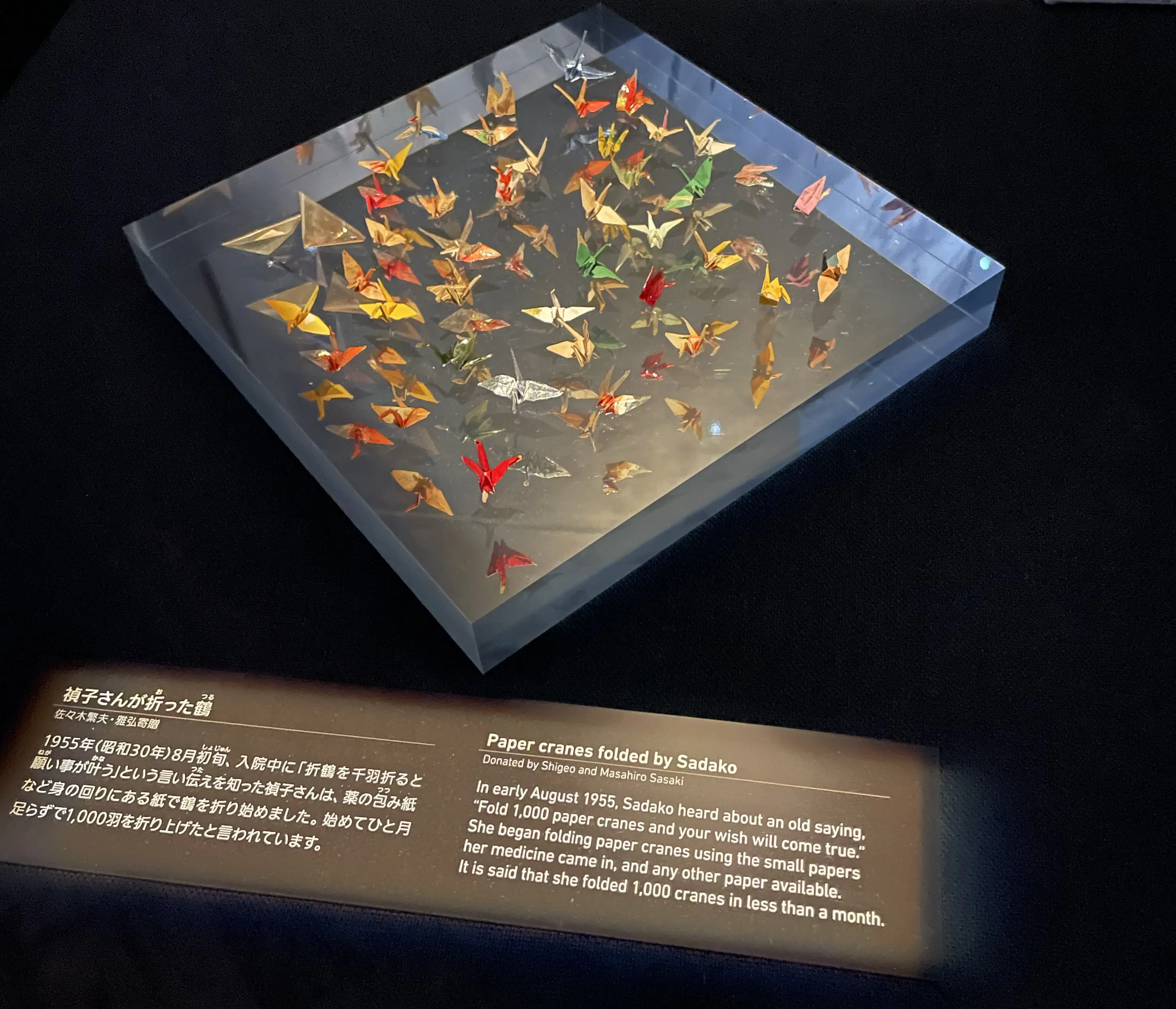
Tears ran down my cheeks when we got to Sadako's Paper Cranes. I remember reading her story as a kid, but seeing the cranes she folded was surreal. I couldn't take it anymore and rushed through the rest of the exhibits.
Staying at a Ryokan in Kinosaki Onsen
We took a 2-hour train ride from Kyoto to Kinosaki, a quaint onsen town that felt like stepping back in time. When I was growing up in Sri Lanka, there was a dubbed Japanese TV drama called "Oshin". Kinosaki resembled what Oshin showed as the Japanese way of life.
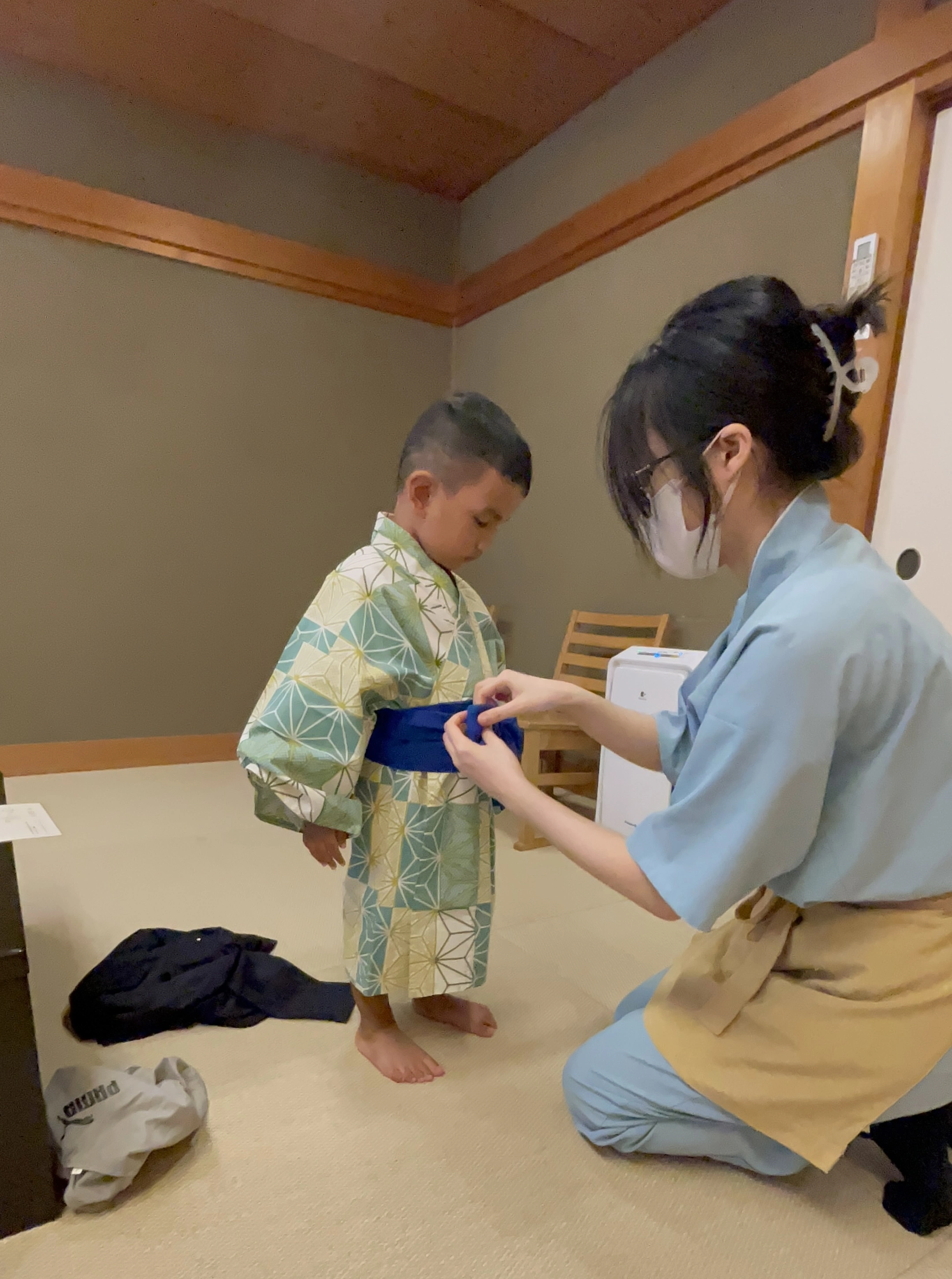
We stayed at a ryokan in the middle of town. We were given yukatas and getas to wear (they come in kid sizes too), sat on tatami mats to enjoy Kaiseki meals, and slept on futon beds.
The town had seven public onsens, but we didn't have the chance to experience them with the toddler. However, the ryokan we stayed at offered four private onsens, which we enjoyed.
We walked to the source of the hot spring. There, we boiled eggs in the hot spring water. Though we didn't enter the public onsens, we got to dip our feet in the foot baths near them.
Osaka Aquarium
This aquarium is massive and beautifully designed. The Sydney Aquarium feels like a small fish tank compared to this.
We spent at least an hour watching whale sharks swim with manta rays and other Pacific Ocean fish.
Mt.Fuji
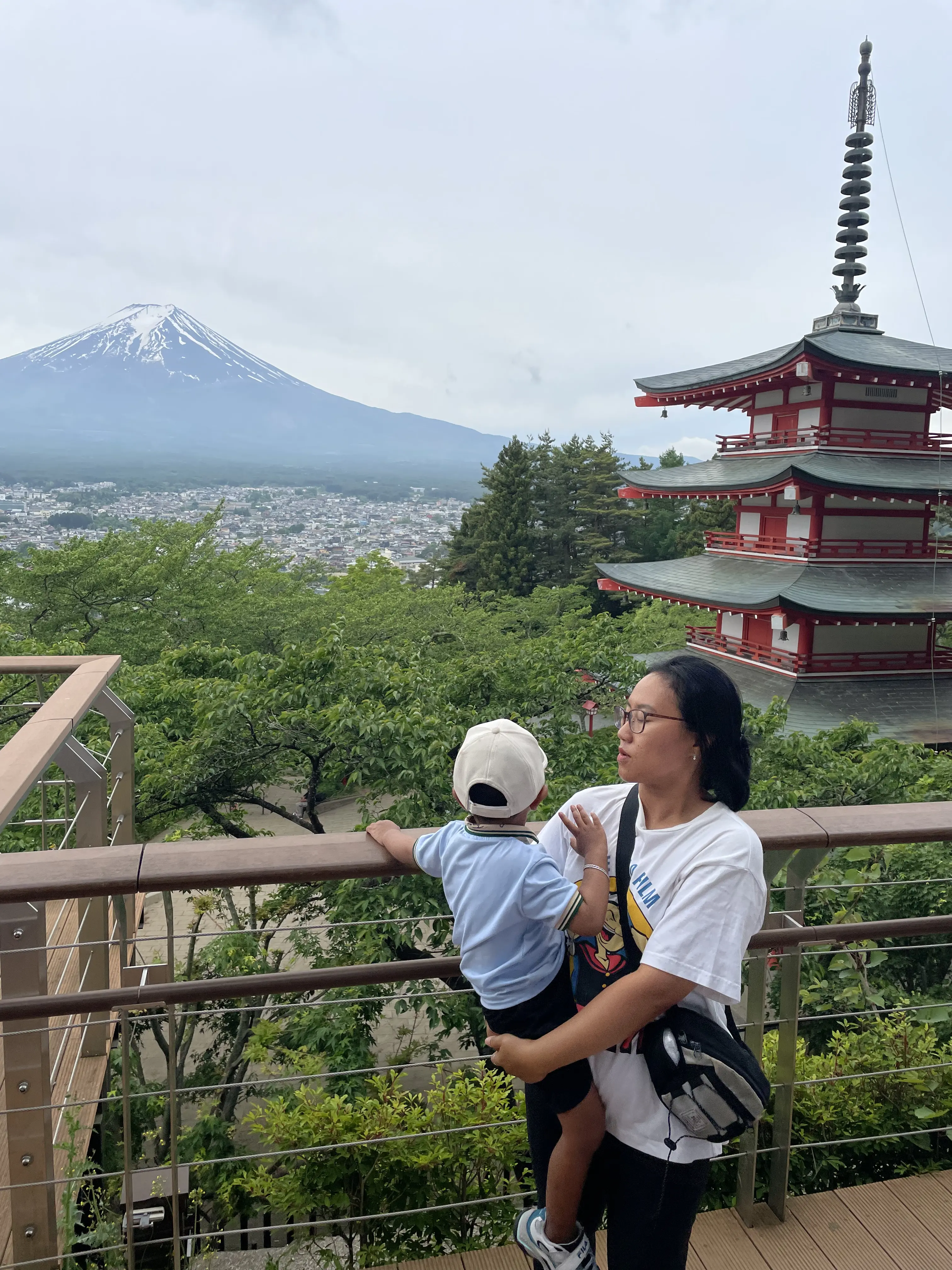
We first got a glimpse of Mt.Fuji while taking the Shinkansen from Kyoto to Tokyo (remember to book the seats on the left side of the car to see it). Seeing it for the first time was surreal—most of the train ride until then was just passing monotonous flat terrain, then came the majestic giant.
We also hired a private car to take us around Lake Kawaguchiko to get a closer view of Mt.Fuji (and take lots of photos with that beautiful backdrop). The original date we were supposed to go was cloudy and rainy. Luckily, the driver agreed to postpone it to the next day, which gave us a clear view.
Tip: If you're planning a trip to see Mt.Fuji check this website to get the visibility forecast.
TeamLabs Planets
We visited both TeamLabs Planet and Borderless in Tokyo. Borderless was more of a visual art experience, with illuminations and projections. It was kinda like Vivid Sydney. Good spot for cute Instagram photos, but we felt it was underwhelming.
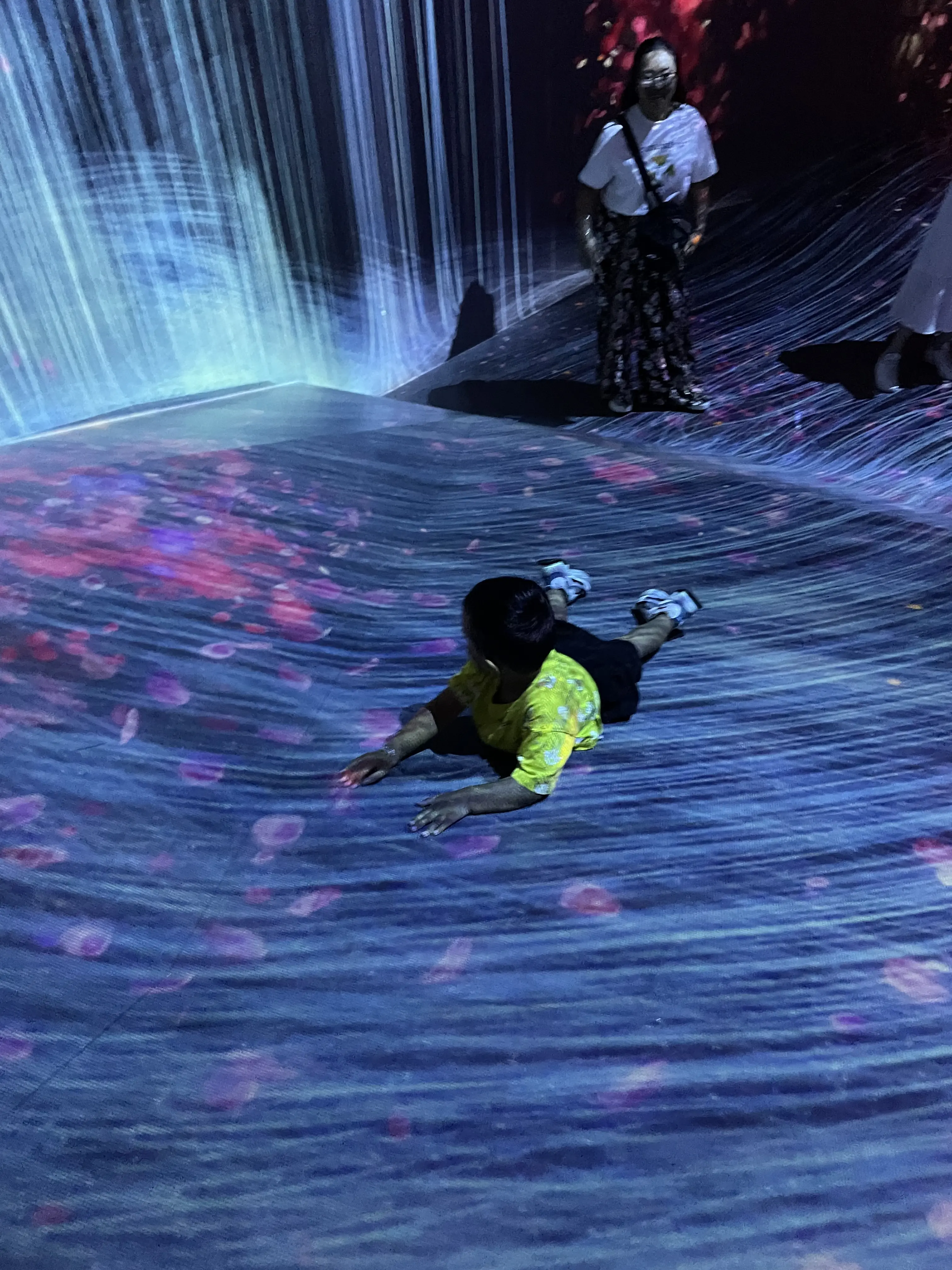
TeamLabs Planets was a different story - it was way more engaging and fun. Our son enjoyed the water play and giant air balloons so much that we had to re-enter those exhibits multiple times.
Also, TeamLabs Planets is near the Toyosu Wholesale Fish Market. We had some time before TeamLabs and visited the Toyosu market. The daily tuna auction had ended when we visited, but we still got to see them loading giant tuna into trucks using forklifts. Fascinating stuff.
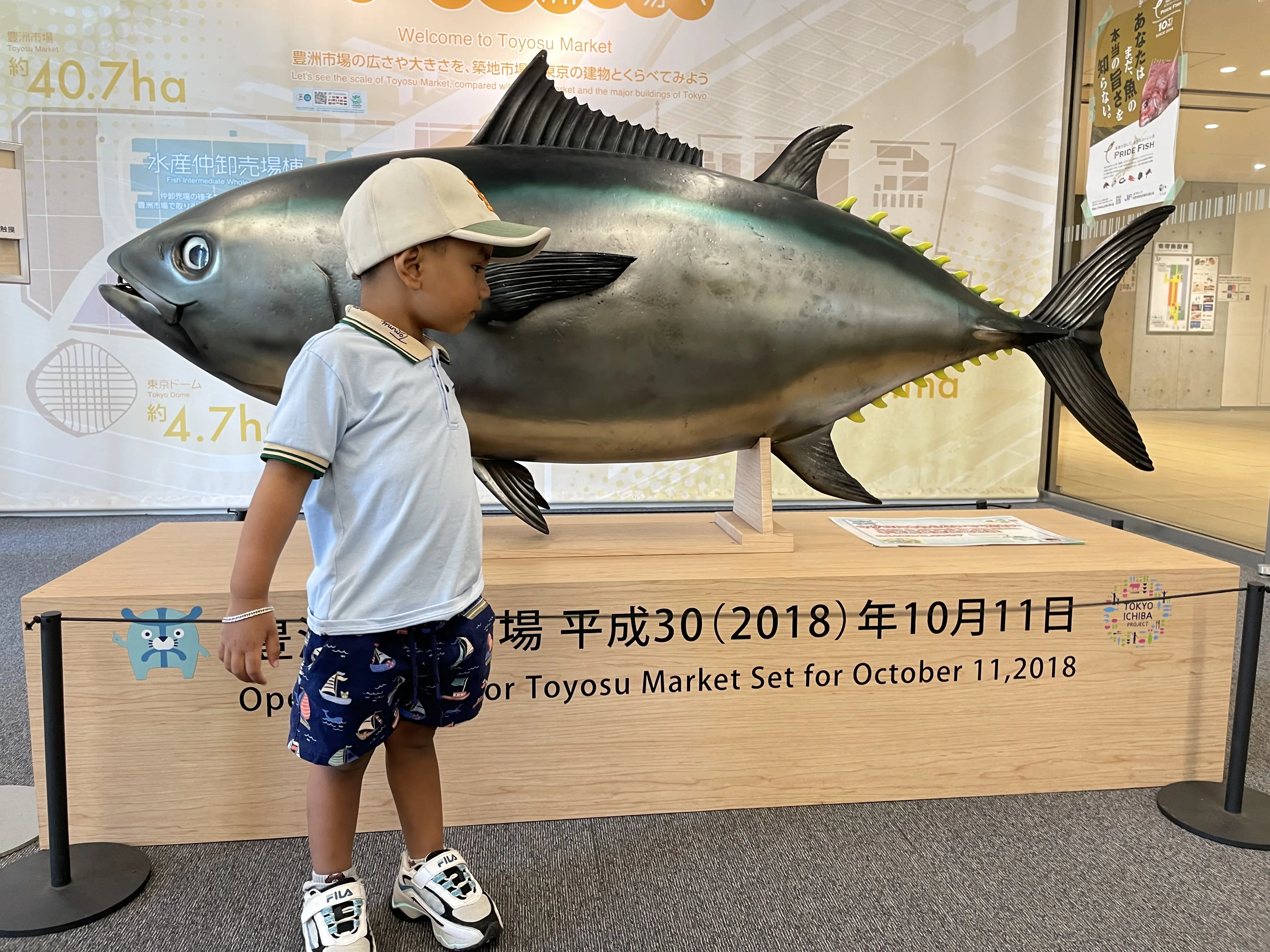
Cars
Our son is obsessed with cars, so in this trip I wanted to give the him the chance to see as many cool cars as possible.
In Osaka, we visited G-Lion museum, a small but interesting collection of vintage cars. We saw Model-Ts, a 1960s Red Corvette, and early Nissan sports models there.
We also visited Nissan Crossing in Ginza, where they showcase some of their concept cars.
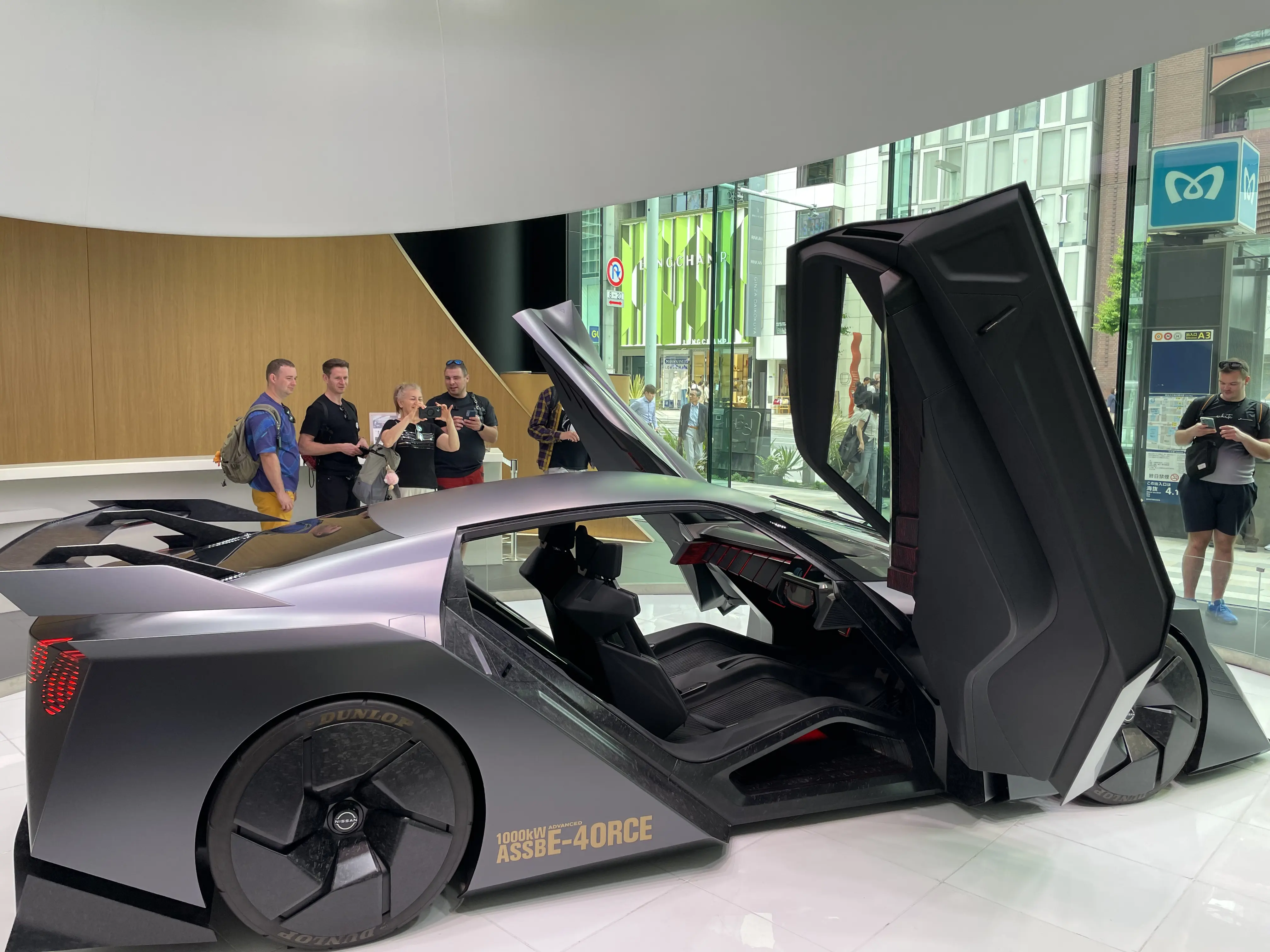
The Roppongi Hills area, where we stayed in Tokyo, had a high concentration of supercars. We had a lot of fun spotting different Ferrari, Lamborghini, Bentley, and BMW models during our walks. We also spotted a drift car meet in Akihabara—a real-life "Tokyo Drift."
Of course, spotting cars was not enough for our son—he wanted to buy them, too. Thus, most of our shopping time on the trip was spent browsing toy stores for Tomica models (tip: we found BicCamera to be the cheapest for Tomica).
Trains
Like with many 3-year-olds, a lot of our bedtime reading involves Thomas, the tank engine. He was mind-blown when he found out bullet trains are real. We took two Shinkansen trips - one from Osaka to Hiroshima and the other from Kyoto to Tokyo (this was on the Nozomi, which has a maximum speed of ~300 km/h).
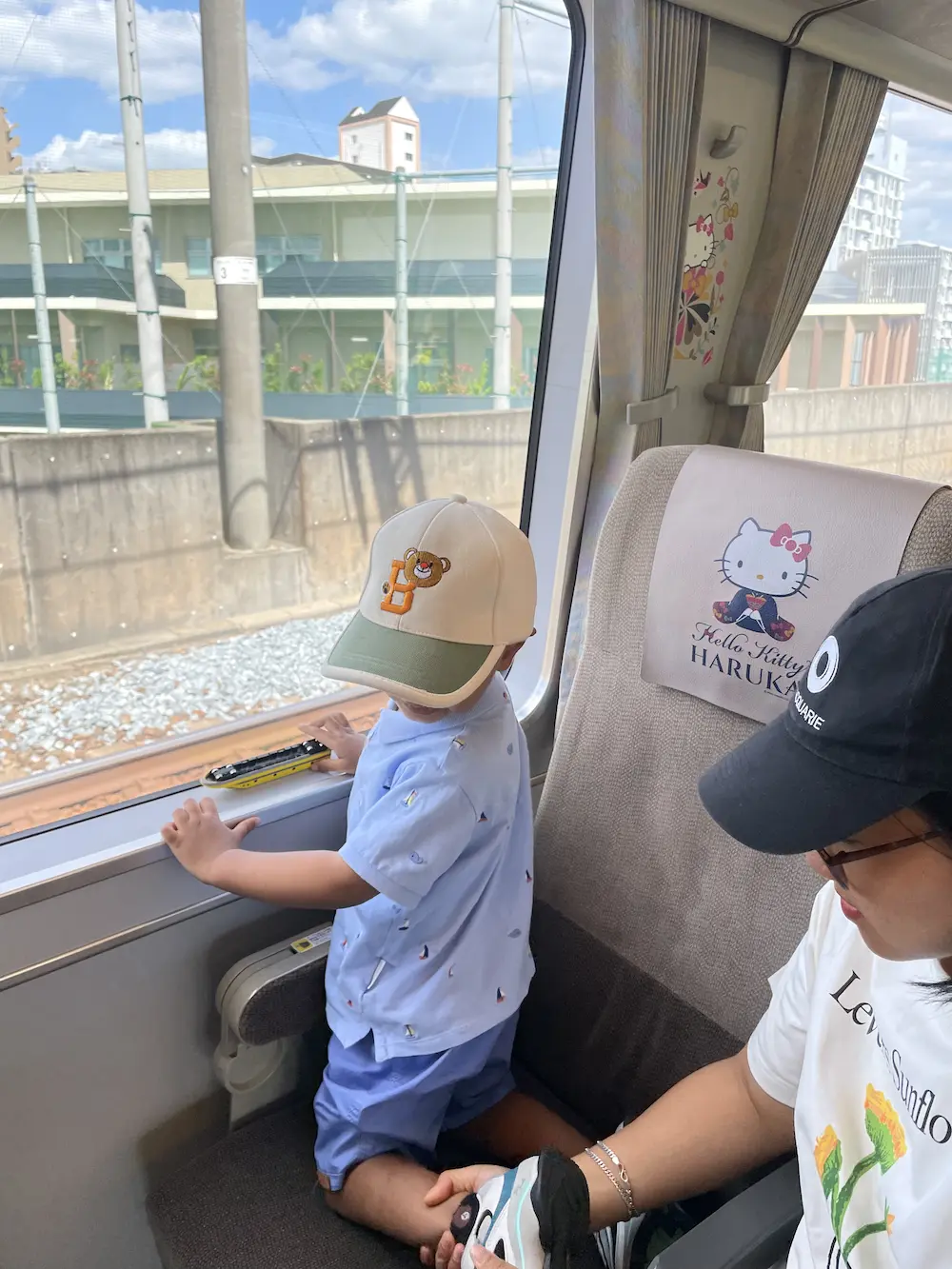
In Osaka and Kyoto, we used the JR West pass. This was good value for the money, it covered both Hiroshima and Kinosaki trips plus we took many random train rides for fun. Each station has a unique stamp to collect, and the station staff gave us free stickers too.
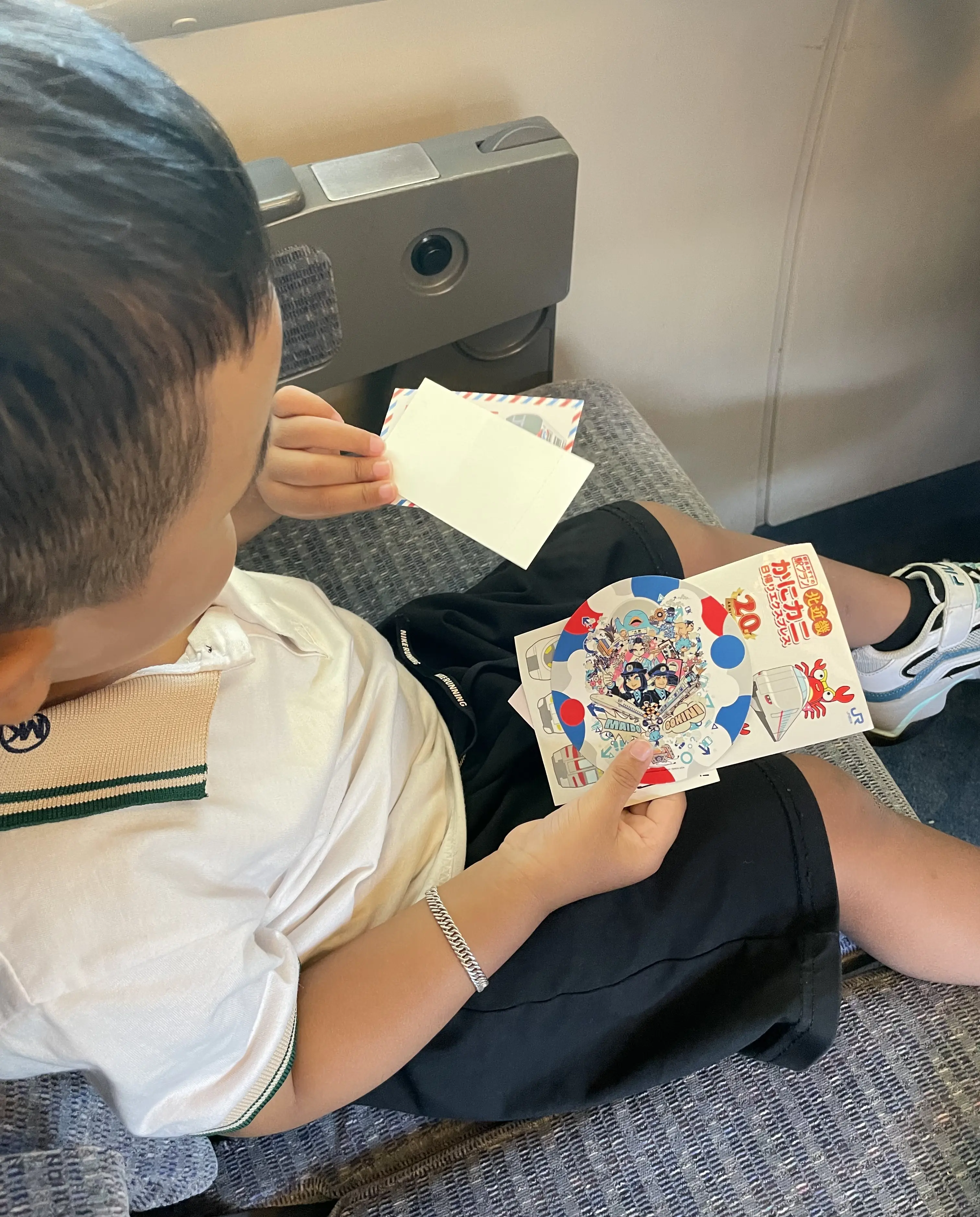
In Kyoto, we visited the Rail Museum, which has an extensive collection of locomotives from Steam trains to the early Shinkansens. It was fun for our son to get into the driver's compartment and pretend to be the driver. Also, we found the museum does a great job in the educational aspect with interesting simulations. This was something we found to be lacking in Sydney's rail museum.
Robot / Dinosaur Hotel
We stayed at the Henna Na hotel in Haneda, the last night before our flight back from Japan. The check-in experience was fun, where two dinosaurs and a robot lady greeted us.
Ramen
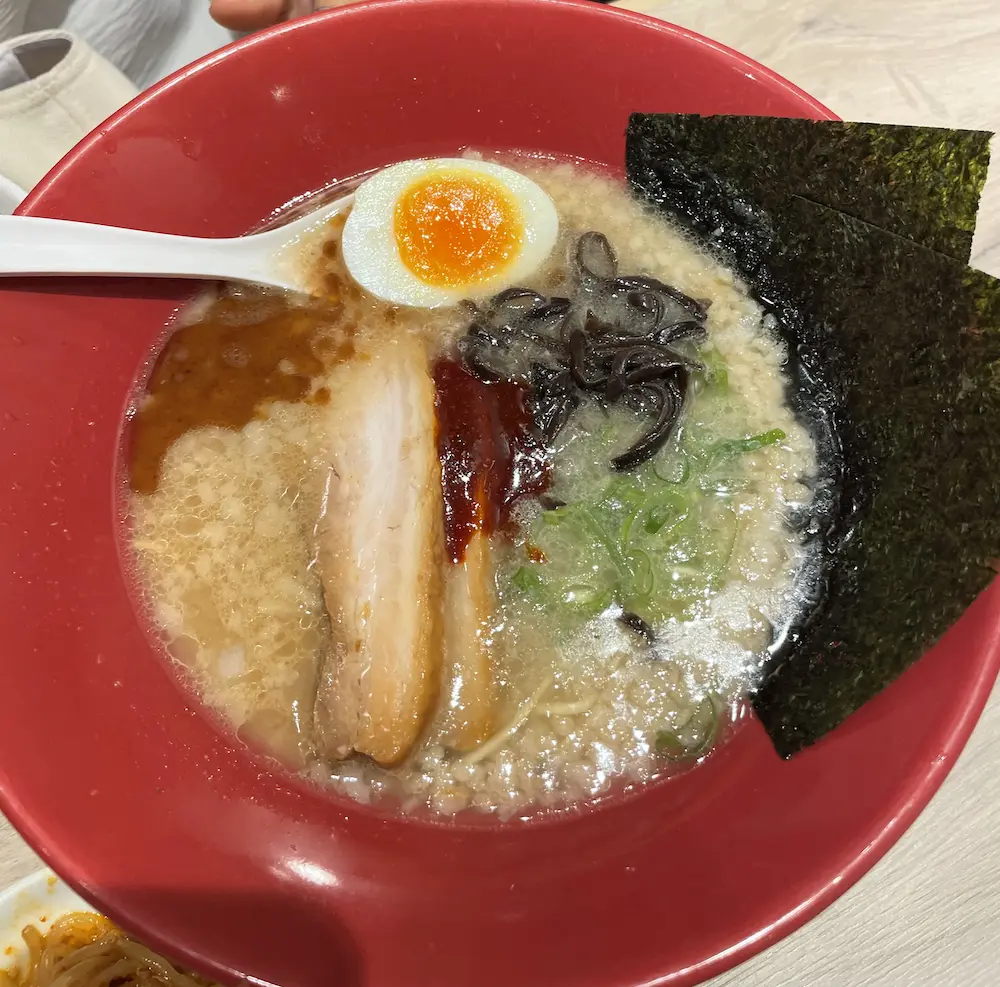
Despite travelling with a toddler, we enjoyed a lot of Ramen. I thought getting seats in ramen joints would be challenging, as they have limited seating. Almost every place we went was accommodating and didn't mind a toddler taking up a seat.
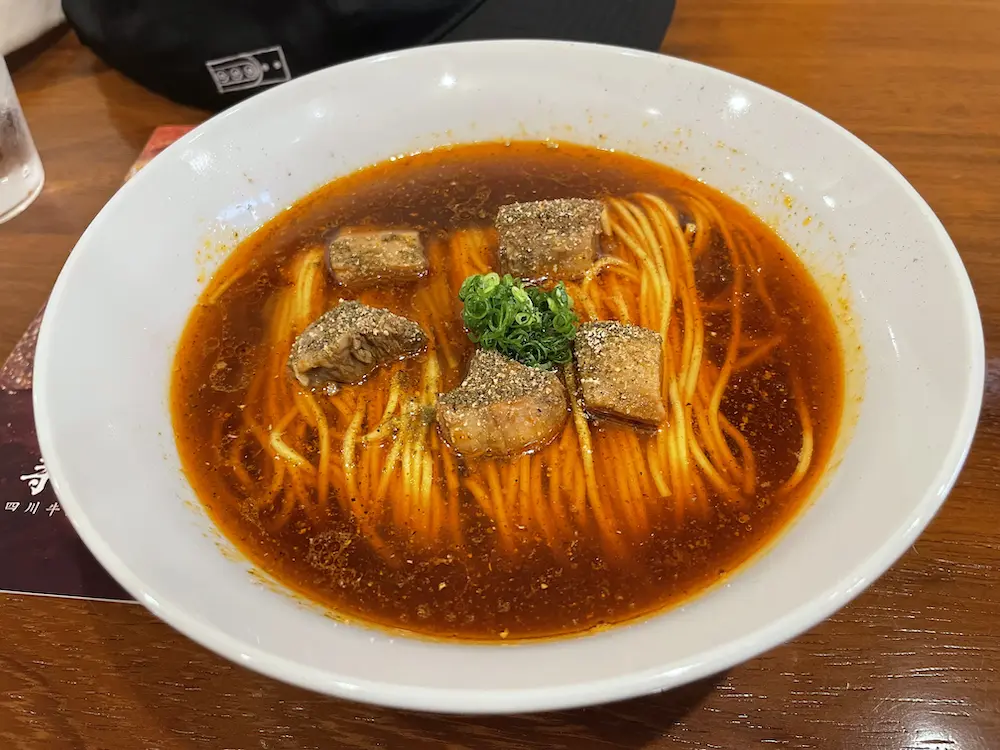
We even got to try the Ramen Hyashida, famous for its duck broth ramen, in their Asakusa outlet without having to queue up. We queued up on Ramen Street in Tokyo Station, but it wasn't worth the hype.
In my opinion, smaller ramen joints near residential areas serving the local crowd are the best. For example, the very first ramen we had in Osaka had a Google rating of only 3.6, but it was the most amazing broth I've ever tasted.
Wagyu Beef
We splurged on quality Wagyu beef during the trip. In Osaka, we found an all-you-can-eat Wagyu Yakiniku. The meat was fresh, there were no restrictions on the servings or duration. The kid was sleeping as well, so we just enjoyed ourselves for nearly 2 hours.
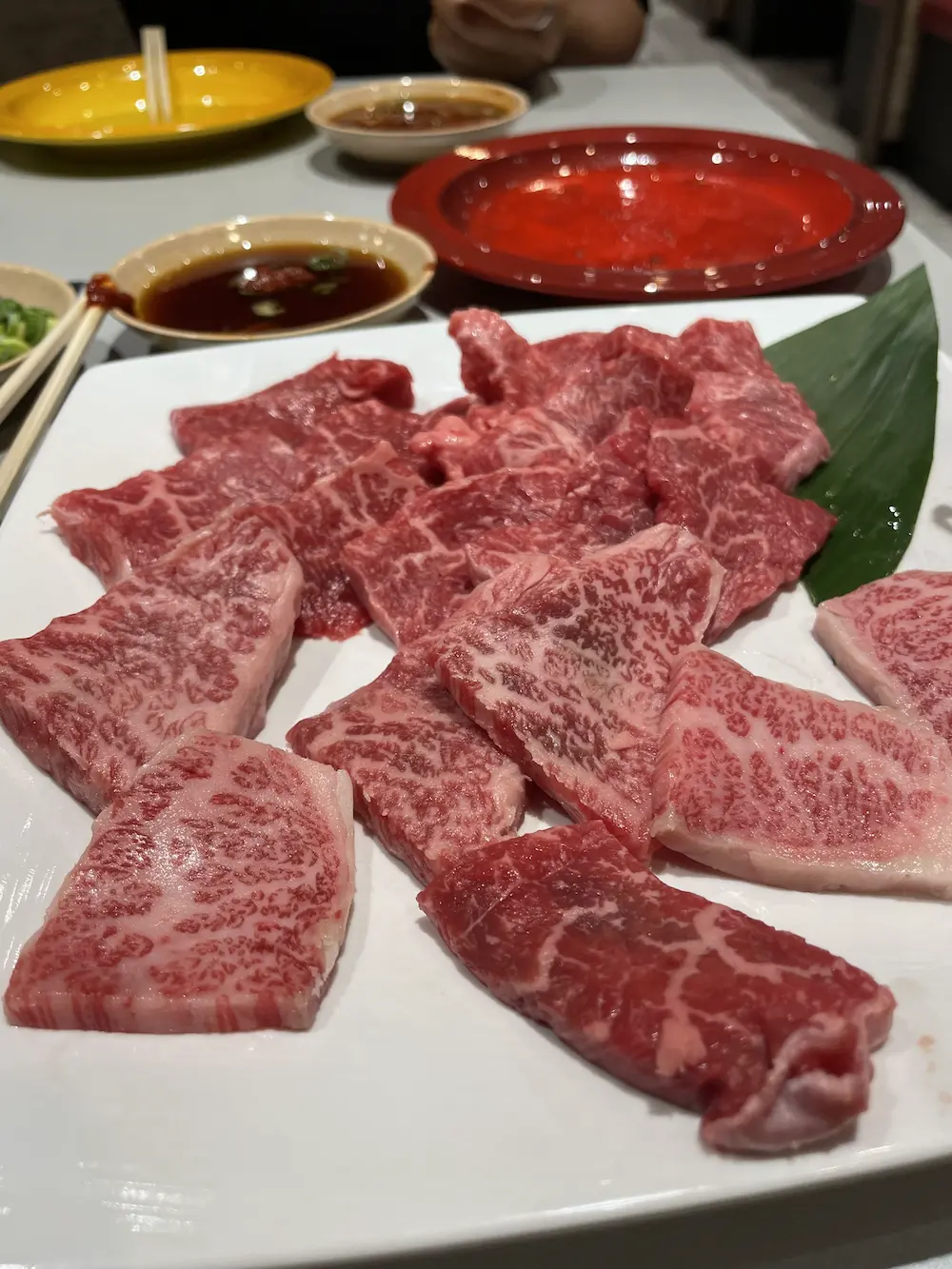
We learned that only the meat of Tajima-bloodline cows from Hyogo Prefecture is certified as Kobe beef. We tried Tajima beef skewers in Kinosaki, which was in Hyogo Prefecture.
While walking back from the Rail Museum in Kyoto, we were looking for a quick dinner. Spotted this small family-run restaurant in an alley without any queues. They served the most amazing pork katsu I've ever tasted. The fat just melted in the mouth.

Japanese Whiskey
I wasn't lucky with the lottery to visit Suntory's Yamazaki Distillery. A slot opened in the last minute, but it was too late to make arrangements to visit.
I had also bookmarked a few other interesting whiskey bars around Osaka and Tokyo. But those were not toddler-friendly.
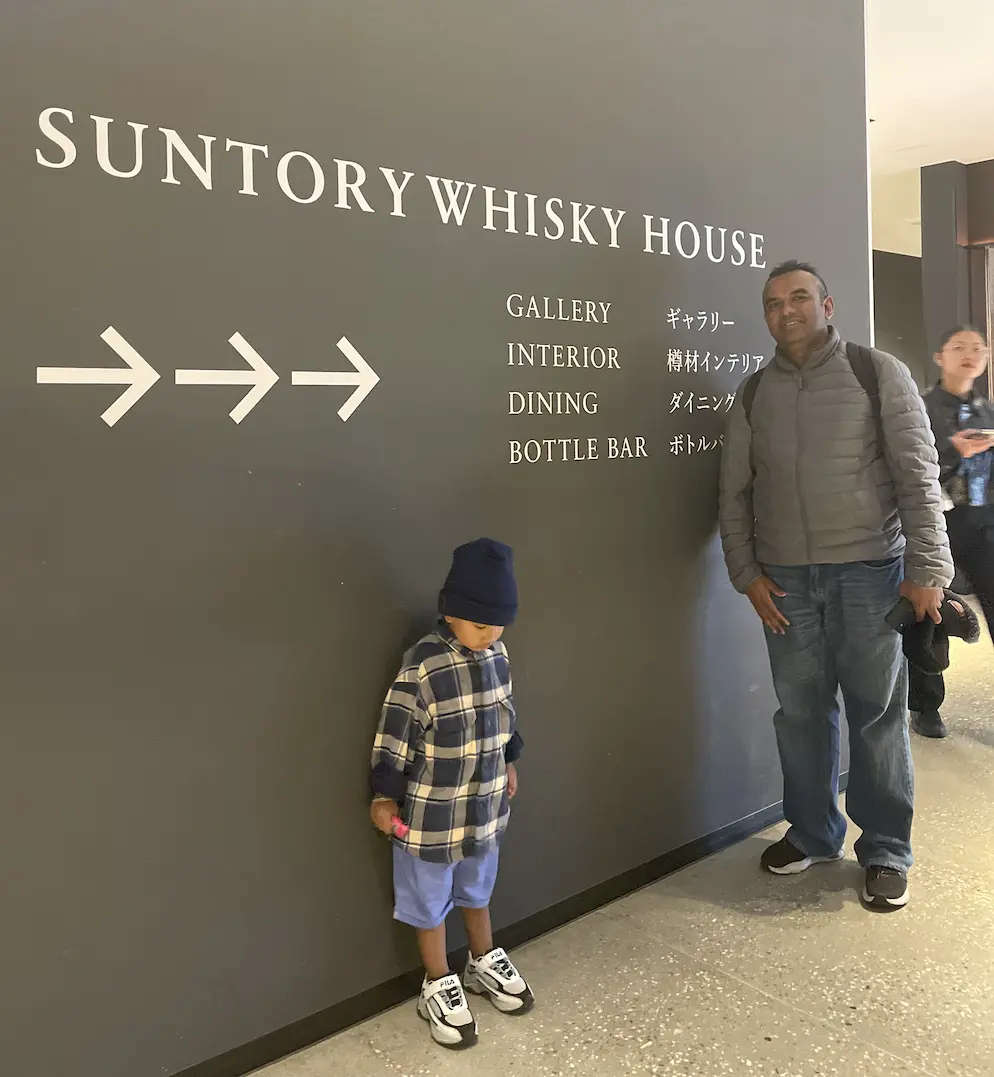
The compromise I found was Suntory's Whiskey House in Osaka, a dining bar offering whiskey tasting and a small gallery of Suntory whiskies. I tried the premium tasting paddle (Yamazaki 12, Hakushu 12, and Hibiki blender's choice) and a Hibiki 12 shot. They also serve a quality wagyu beef sandwich, which my wife enjoyed.
In this trip, I fell in love with Umeshu soda. It was the perfect drink after a long day of walking in the hot sun.
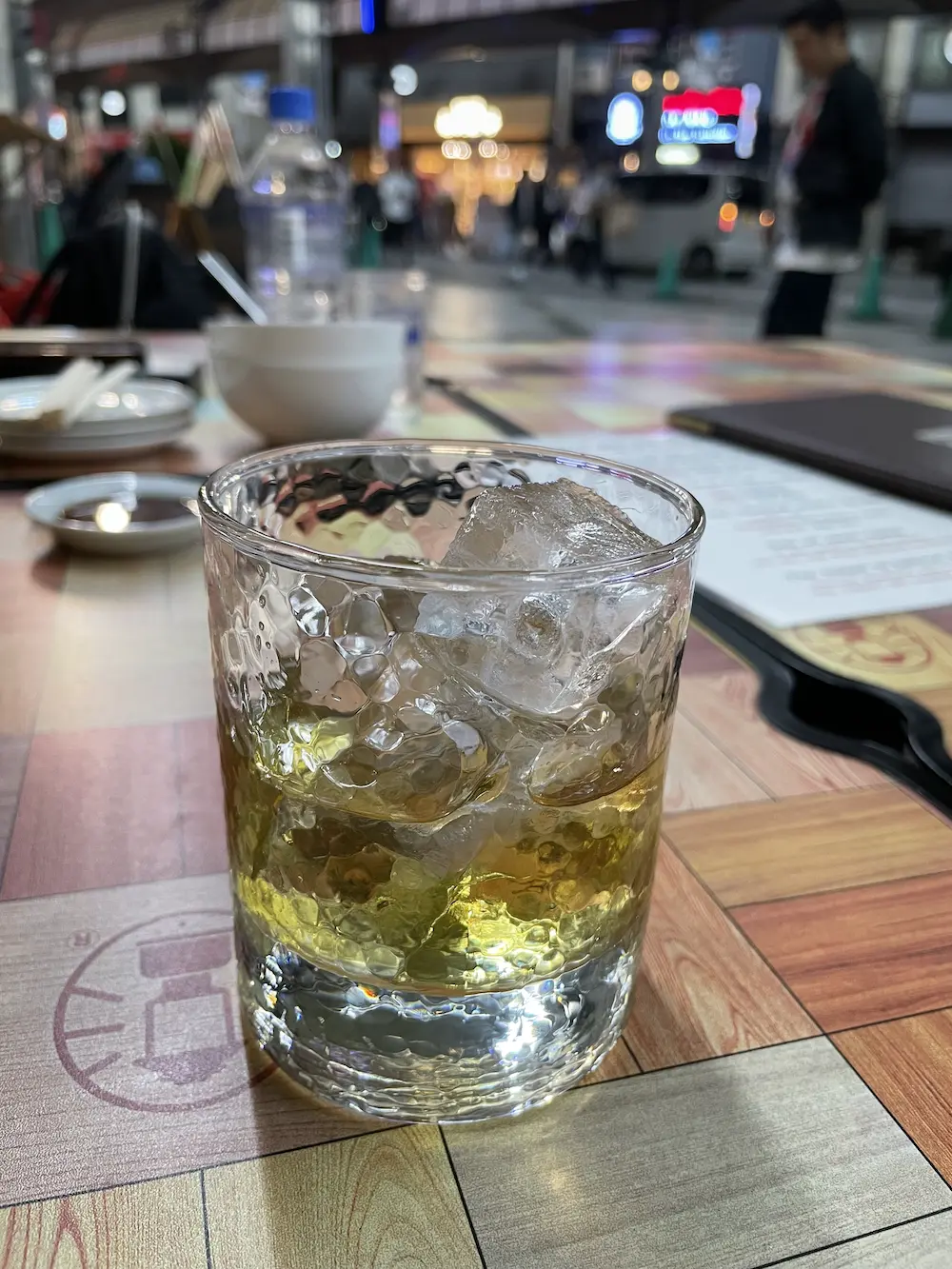
I was tempted to spend big on some age-labelled Japanese whiskey, but restrained myself and only bought a Nikka Coffee Grain, which I found half the price it'd normally sell in Australia (tip: I used this website to compare Japanese liquor prices and to see if it's a good deal https://search.kakaku.com/).
Tea
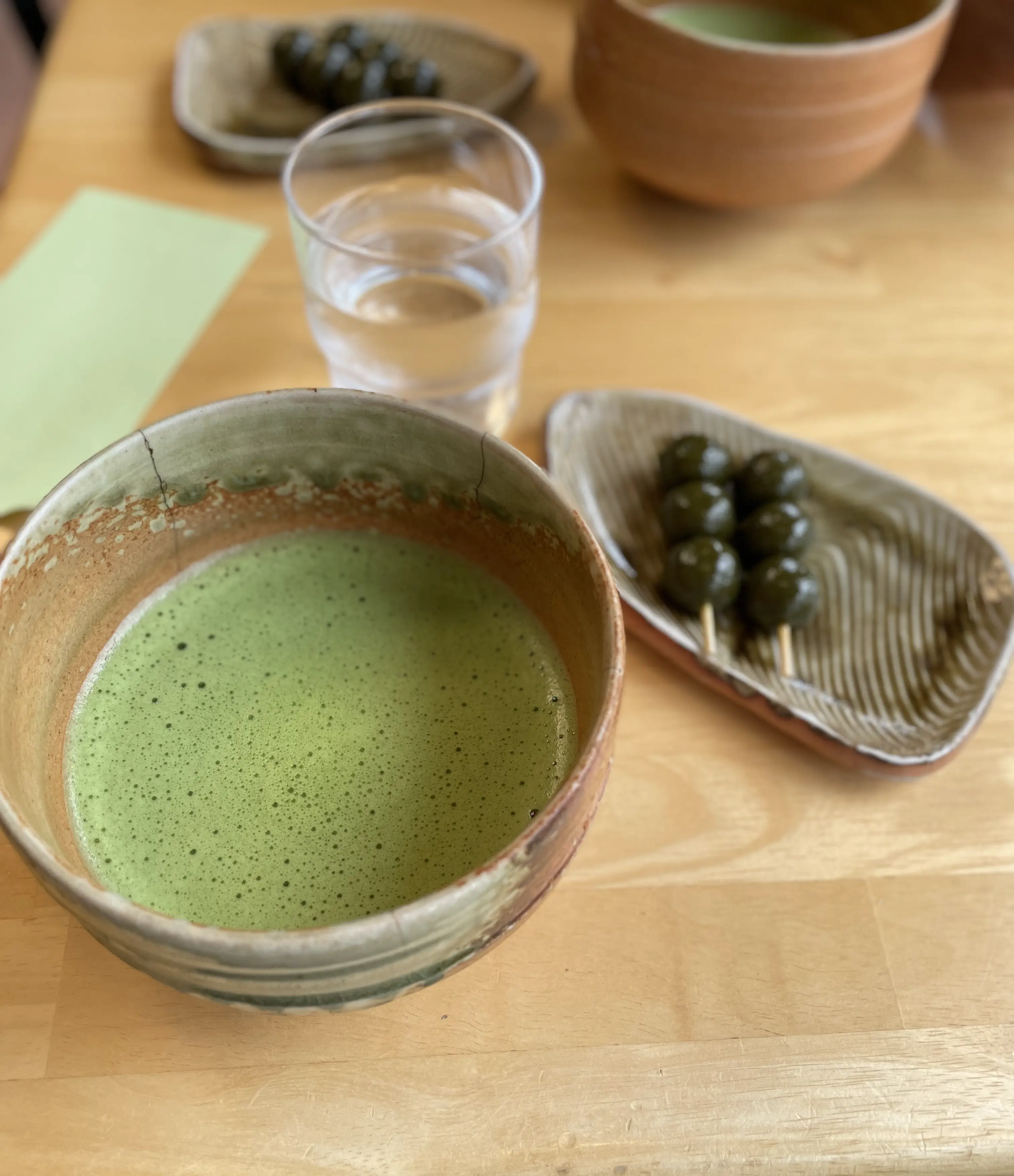
My wife loves Matcha, so we visited Uji, known as Japan's Matcha Capital. It's about a one-hour train ride from Kyoto. We found a small family-run tea shop outside the busy tourist path, where we sampled various grades of tea leaves (they also serve delicious Matcha ice cream and Mochi).
For me, the revelation was Hojicha (roasted tea leaves). It's very different in taste and fragrance from black and green tea, which I've had all my life. I started ordering it every time I found it on a menu (and some restaurants offer it as the complimentary after-dinner tea too).
Also, I had the best Ceylon Milk Tea I've ever tasted in the Sir Thomas Lipton Cafe, near Nishiki Market in Kyoto. Kinda weird to grow up in Sri Lanka and then come all the way to Japan to experience a great cuppa.
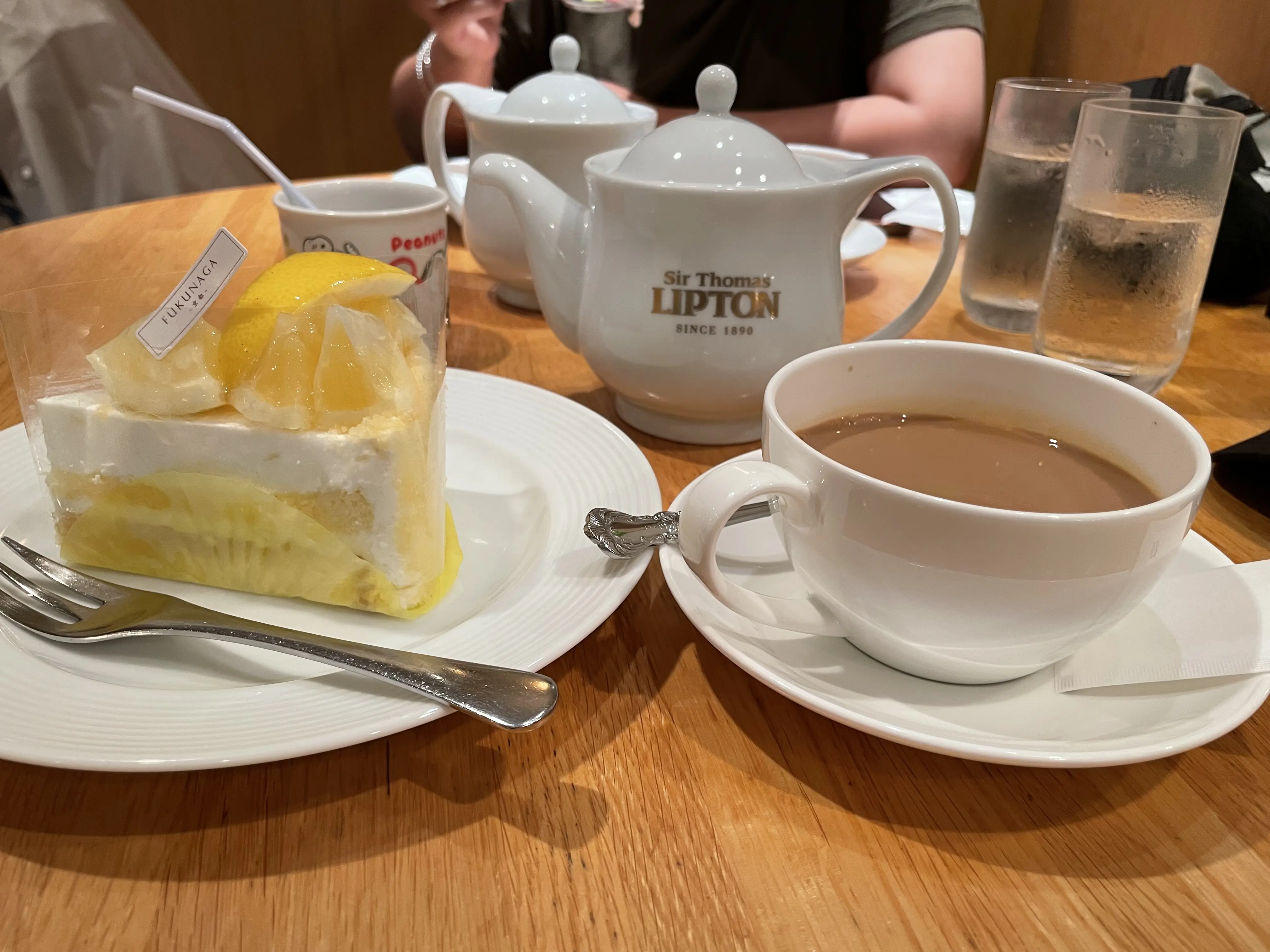
Sushi / Sashimi
I don't like Fish and have avoided Sushi / Sashimi all my life.
However, when we visited the Toyosu market, my wife spotted an Omakase restaurant and really wanted to try it. I reluctantly agreed.
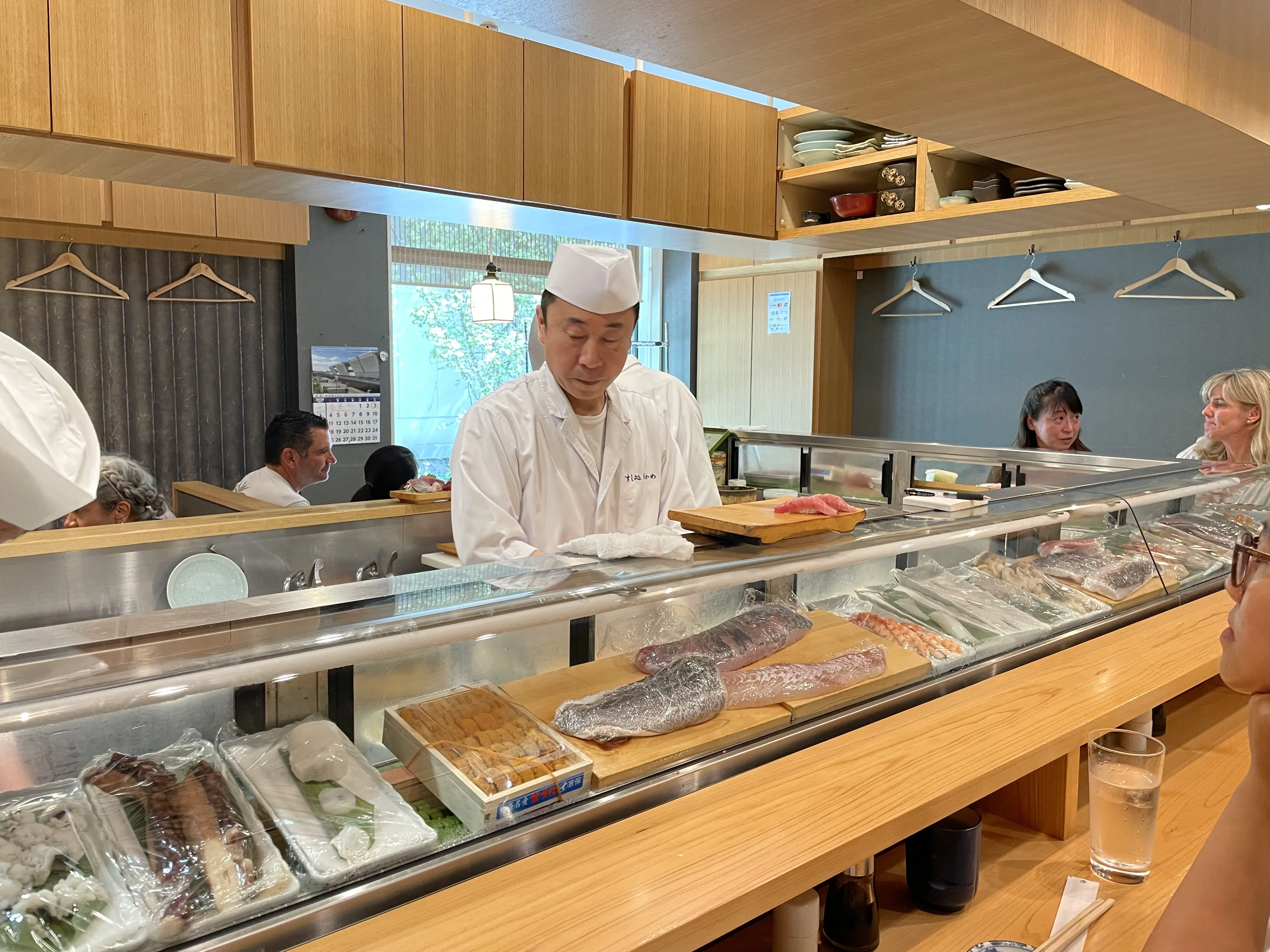
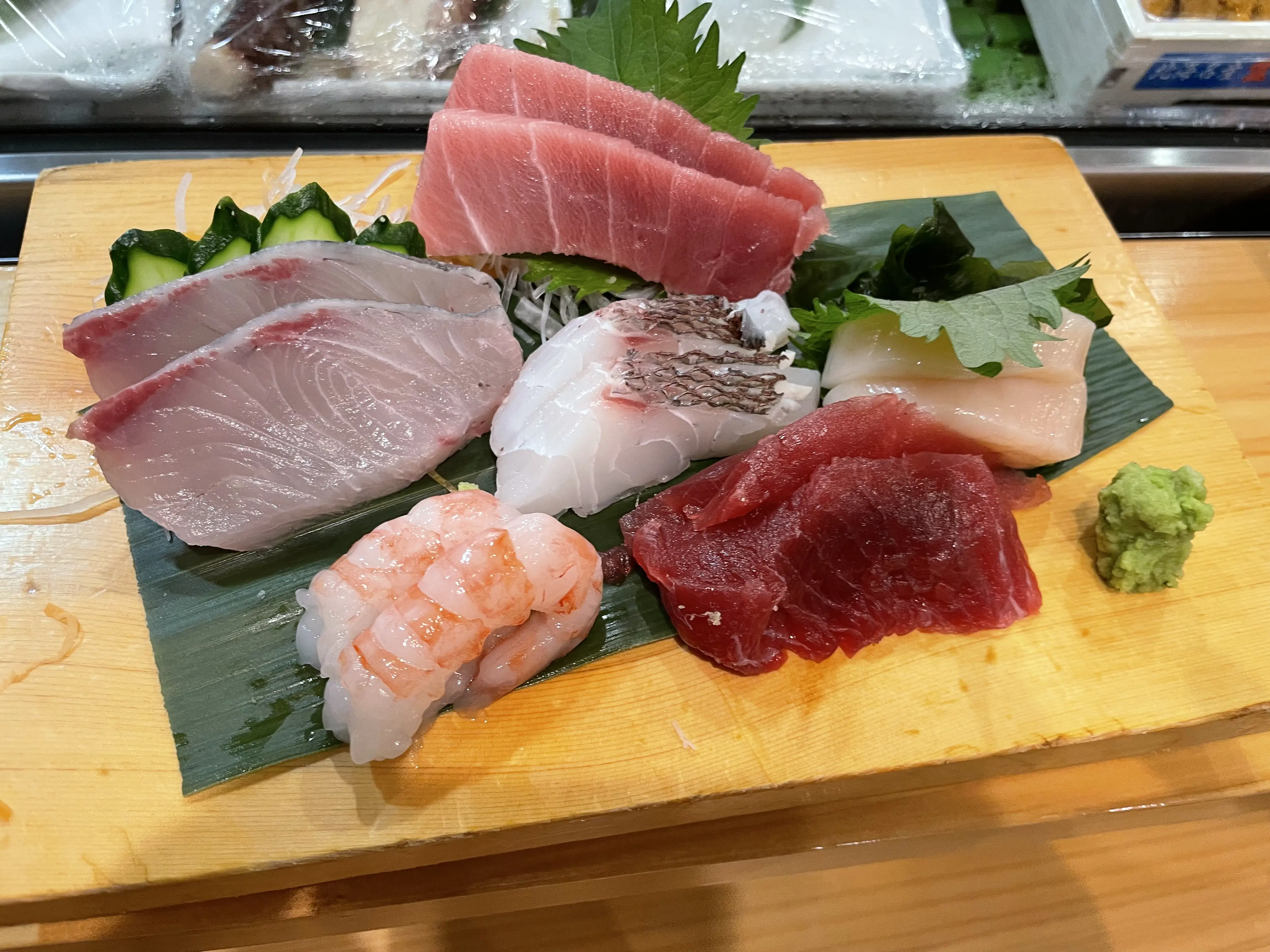
The chef presented us with various cuts of fresh tuna, salmon, and unagi which I had no trouble enjoying. Turns out I just don't like cheap fish.
Public toilets
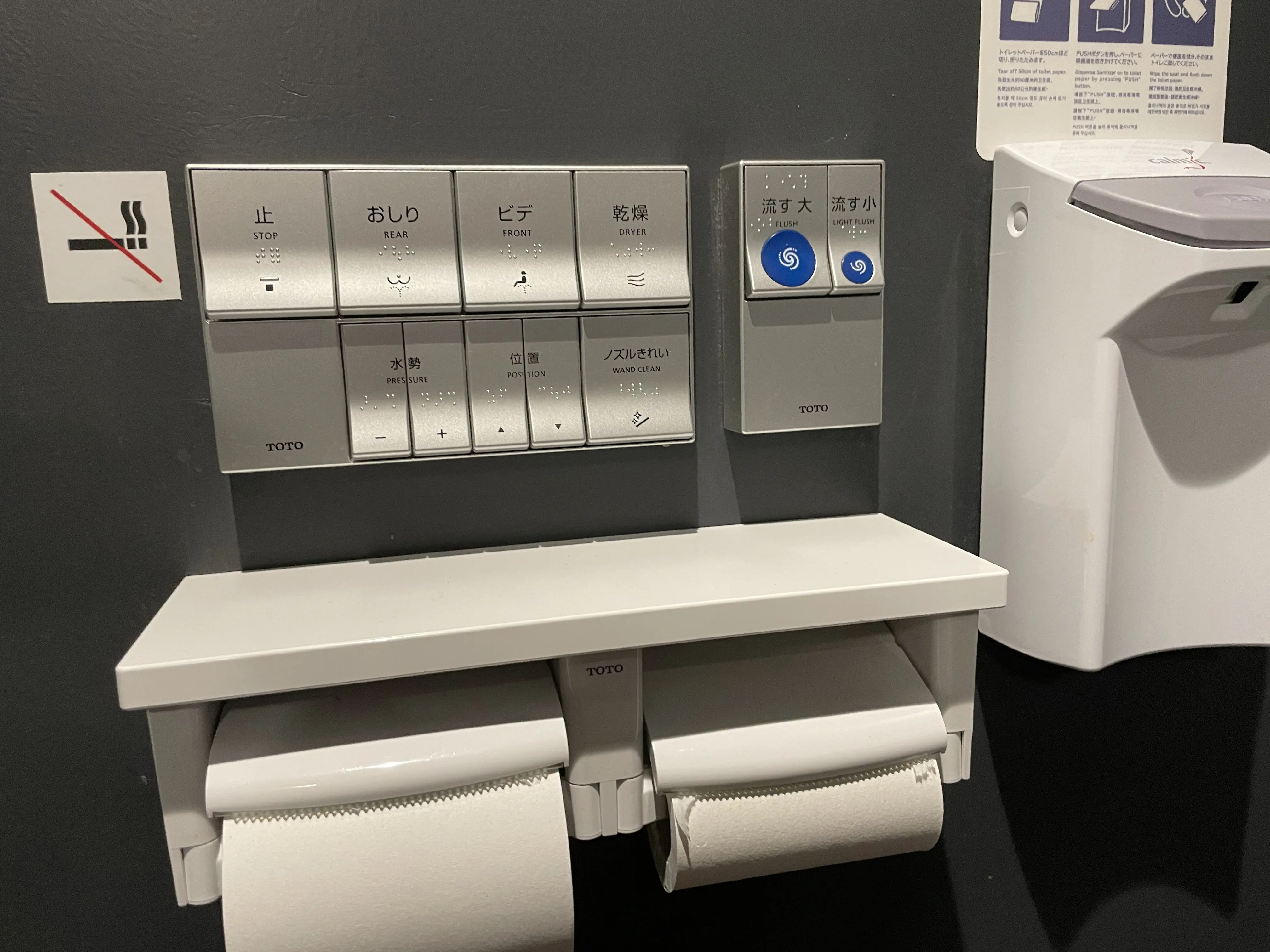
I hate public toilets, which are my biggest challenge when travelling. However, parenting a newly potty-trained toddler means I gotta go when he gotta go.
In this regard, Japan is a heaven. Almost all public toilets have built-in bidets, heated seats, automatic lid opening/closing, and flushing. Some even play white noise to block out disgusting noises from neighboring stalls. There was no messing with single-ply toilet paper, needing to touch urine-soaked lids, or tiptoeing over dirty, wet floors.
Why hasn't the rest of the developed world caught up with Japanese toilet technology and etiquette?
Google Lens
The Google app with its Lens feature is a must-have in Japan. Many restaurant menus, mall directories, and public transport messages are only in Japanese. It saved us from many awkward interactions and getting lost (this will consume a lot of data, though, keep it in mind when choosing a data SIM).
Konbinis (7-11s)
Convenience stores (7-11, FamilyMart, etc.), which are called Konbinis in Japan, are a godsend when travelling with a toddler. An Onigiri (rice balls wrapped in seaweed) from a convenience store was our go-to quick fix to keep the kid filled and happy while on the move. I'm craving a Konbini egg-mayo sandwich and an iced Boss coffee while writing this.
Garbage
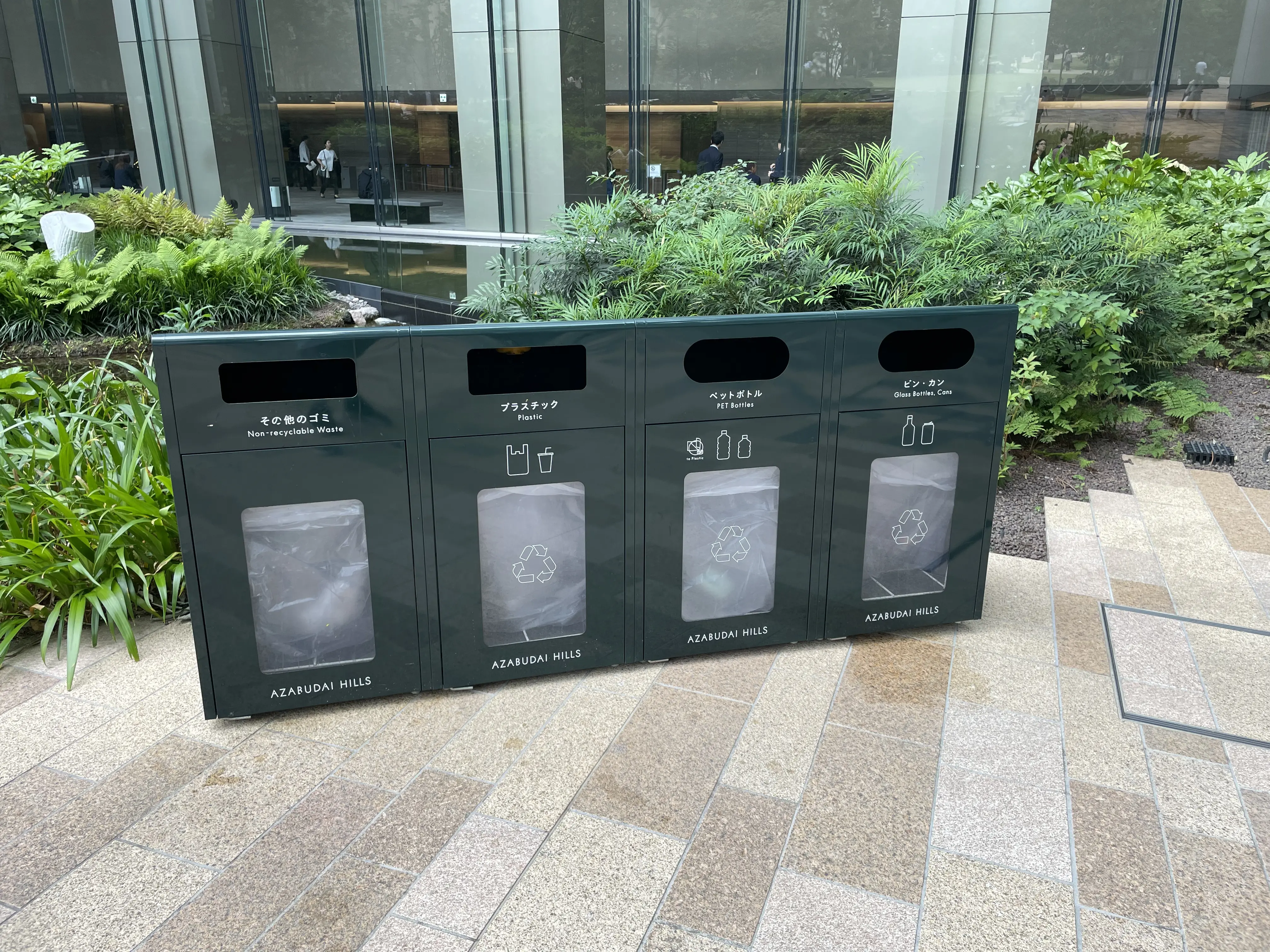
Japan doesn't have garbage bins on the streets, and when we did find bins, there were strict rules about what could be put in them. So, most of the time, we would carry half-eaten onigiris, chocolate, and ice cream wrappers with us until we got back to the hotel at night. Some convenience stores allow general rubbish in their bins, but we came across few that were strict about only disposing of stuff bought at their store.
At first, I was surprised why few take-away cafes exist in Japan. The hassle of carrying around an empty coffee cup is probably the reason.
Taxis
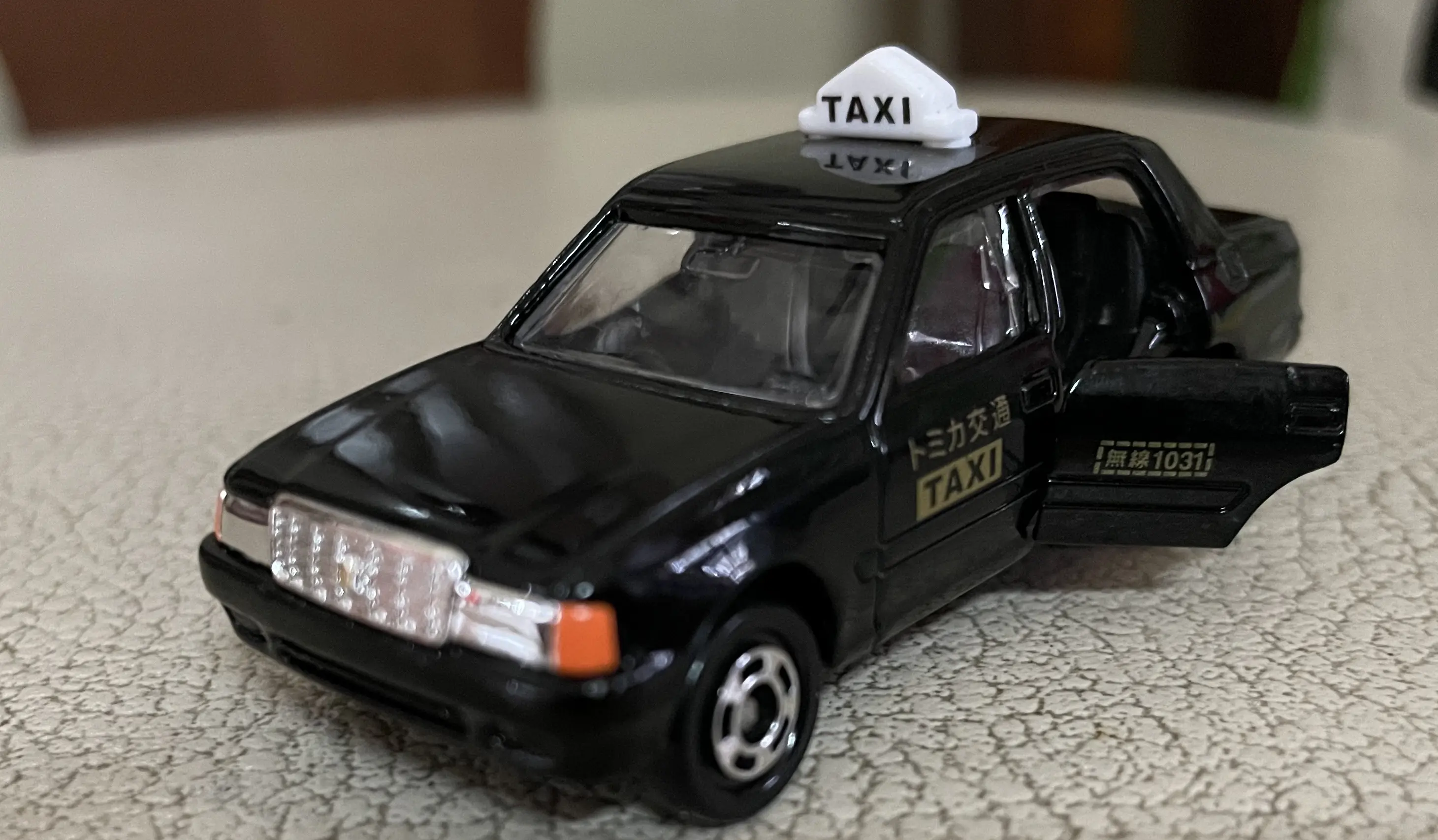
Taking a Japanese Taxi feels like having a personal chauffeur. The driver will get out of the car, help you fold and stow the pram in the trunk, and then hold the door. And the cost for trips is reasonable.
While it's easy to hail a taxi from the street, we always used the GO app to get a taxi as we could pay by card.
Also, I found it interesting that most taxis have the mirrors in the hood instead of the front-doors. Apparently, this is because they have to go through narrow lanes.
Payments
I'm used to Apple Pay for all payments in Australia and hardly carry a physical wallet these days. I haven't had a debit card in years as ATMs allow cardless withdrawals. I assumed it would be the same in Japan, but they are stuck with legacy payment options, which were quite messy.
Surprisingly, many places turned out to be cash-only (even in touristy parts). We had to carry coins, as bag lockers, vending machines, and capsule toy dispensers would only accept coins (beware of capsule toys; kids get addicted to them and will deplete your coin stash fast).
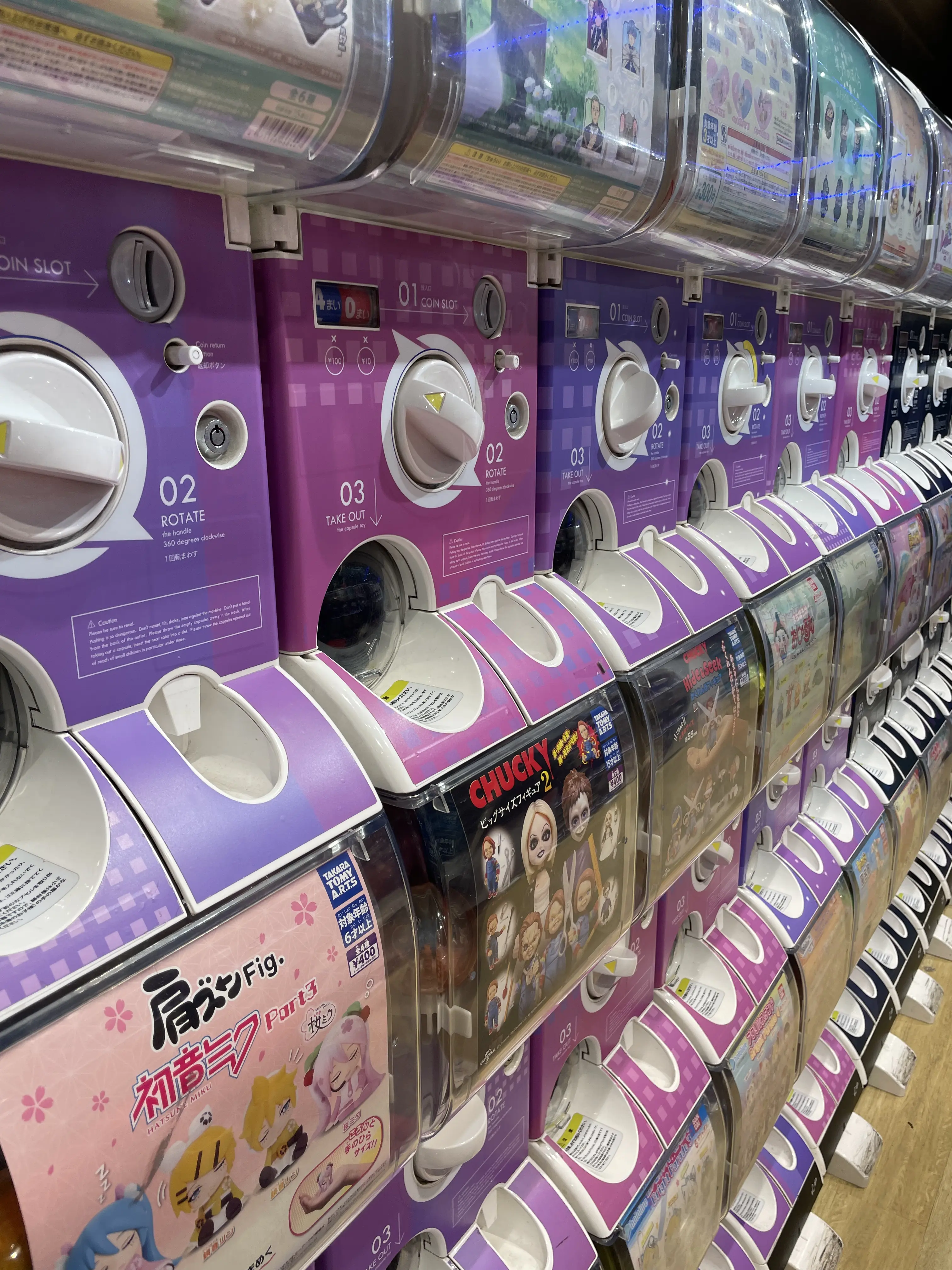
Some places accept credit cards, but they require you to swipe a physical card. For the subway, Apple Pay works, but not with a credit card stored in your Apple Wallet. We had to add a separate pre-paid card called Suica. It turns out they are generally called IC cards and come in other names, too (e.g., Pasmo, Icoca). Some shops and restaurants don't accept credit cards, but take IC card payments. We also ran into places that only accepted payments via mobile wallets like PayPay or Line (we didn't bother installing or setting them up; we paid cash instead).
Tax-free shopping
Unlike other countries, in Japan, you can get a tax discount on the spot at most retail stores without having to go through a separate duty-free counter at the airport (sadly, this is changing in 2026).
If you register with Visit Japan Web, you will receive a QR code to present to the shop so that we can claim the tax discount at the outlet when doing tax-free shopping in bigger malls like Takashimaya. This saves the hassle of carrying around your passport. However, we found that some stores insisted on seeing the passport.
Also, we found that when doing tax-free shopping in bigger malls like Takashimaya, we cannot claim directly at the outlet. Instead, we had to go to the mall's tax-free counter and claim it. They also charge an extra 1.5-2% as a processing fee, and given the hassle of queueing up, it was not worth it. Most standalone retail shops can offer tax refunds (even if they don't advertise it) - just ask.
Playgrounds
Whenever the little one got bored and needed to burn some energy, we were able to find a playground within a short walk. Some playgrounds were modern, some are a bit retro, but they come with interesting equipment like this decommissioned fire truck.
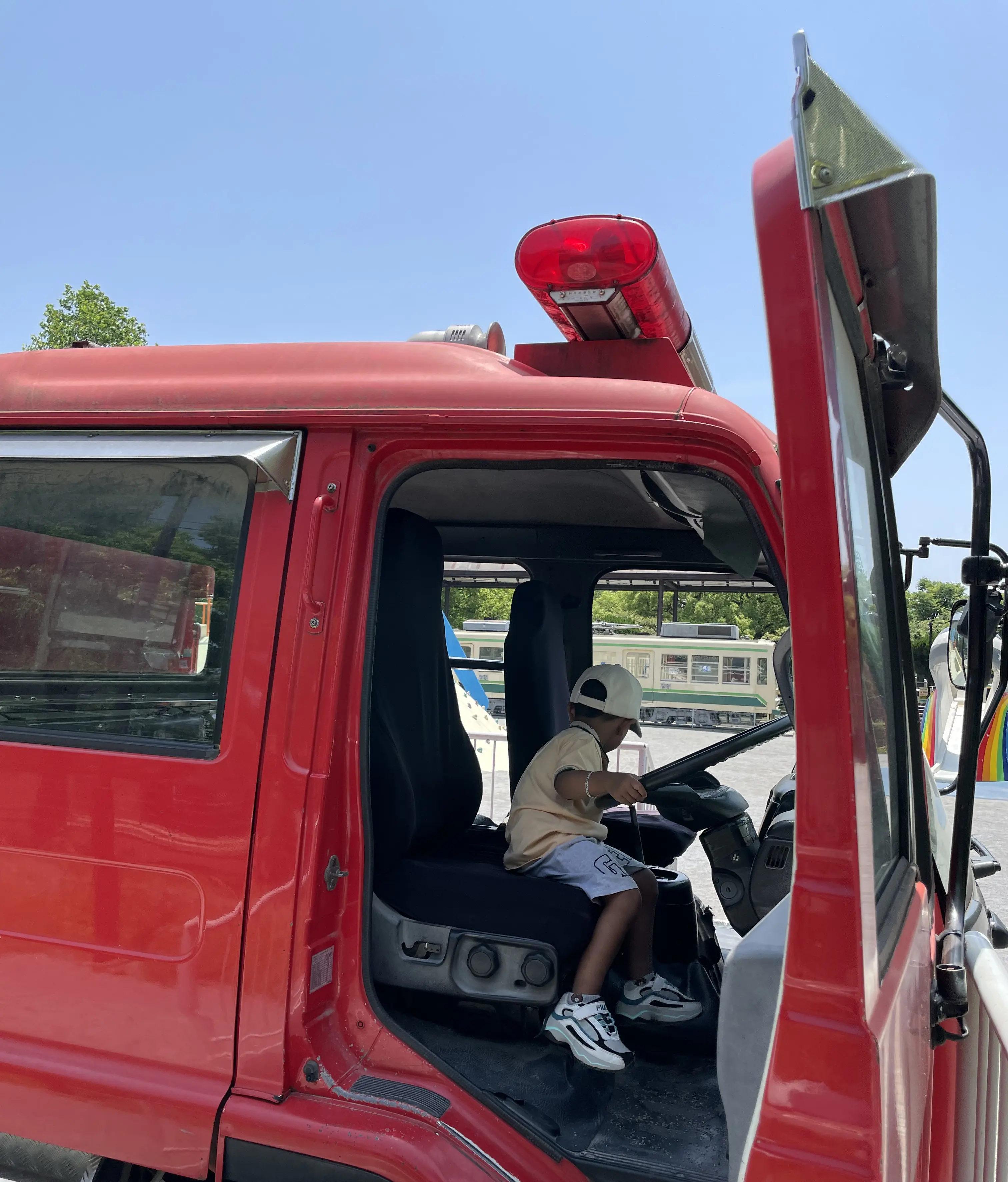
Meet the locals
When travelling solo, I loved meeting some local friends (thanks to the internet) and exploring interesting places outside the tourist bubble. However, coordinating this is tricky when travelling with the family.
After two weeks of hanging out with two of us all day, our son also seemed to have got bored. So he was super happy when we finally met one of my colleagues at Supabase, Tyler Shrukert, and his family for a cosy dinner in Tokyo.
We also found a service called Meal For Bridge, where we could share meals and activities with a local family. It connected us with an interesting family with kids similar in age to our son, but unfortunately, we couldn't work out a schedule that worked for both families.
Random
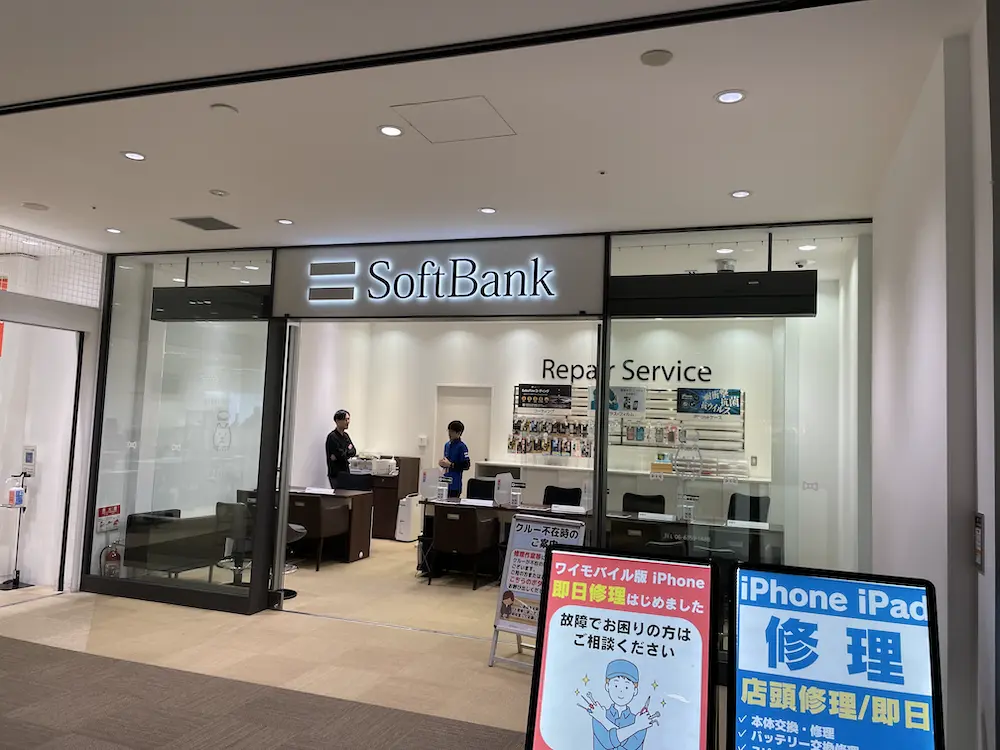
I only knew Softbank as a Japanese investment firm that does crazy mega deals. I didn't know they have brick and mortar shops.

Who knew Japan has more than 24 hrs a day! This Ramen shop showed its closing time as 26:30.
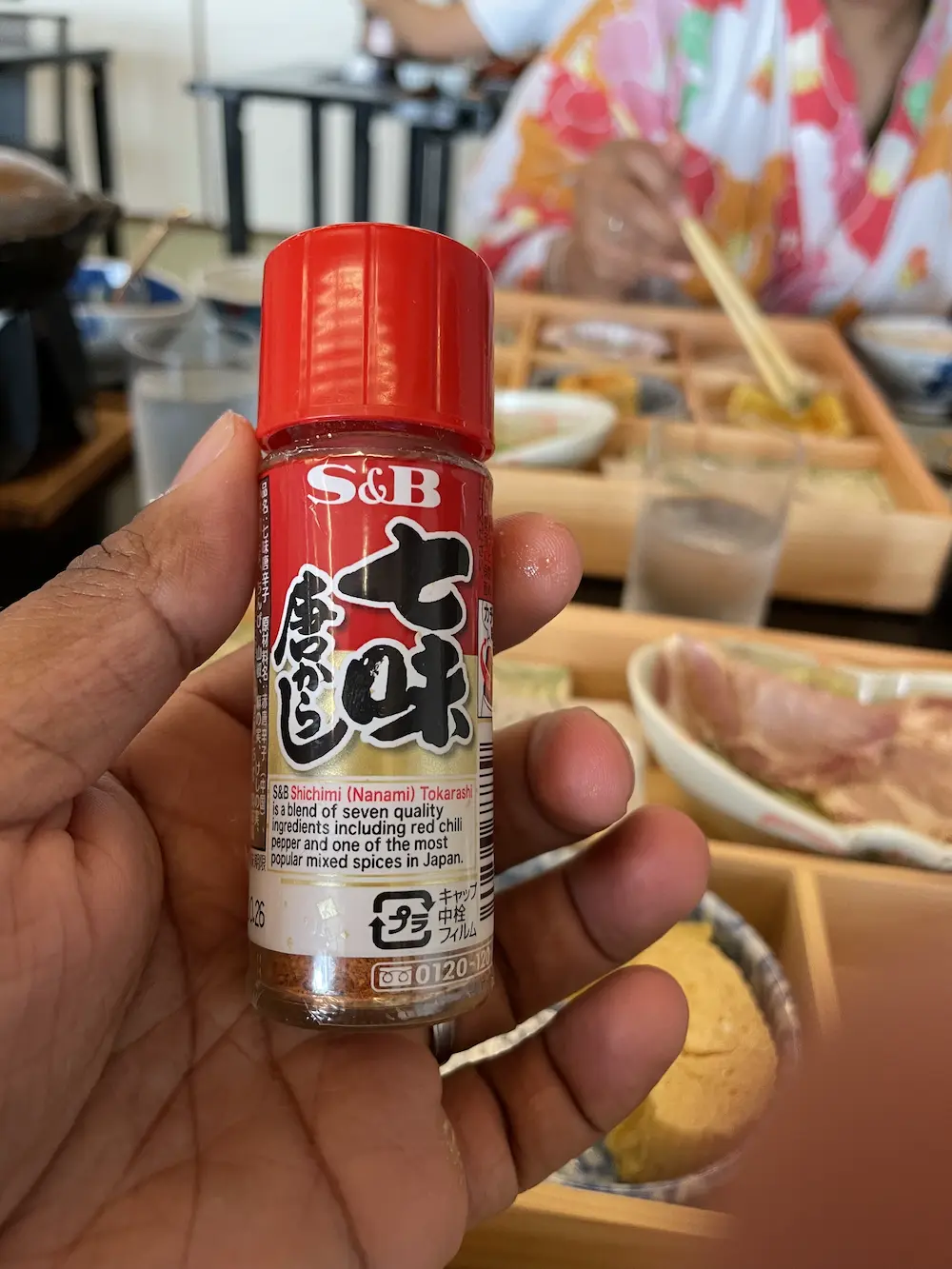
Japanese seven-spice mix (Shichimi Togarashi) is amazing. It makes any dish taste better (especially curries). We bought several bottles to take back with us.
And the temples look majestic at dusk, plus we got to enjoy them leisurely without getting pushed by obnoxious tour groups.
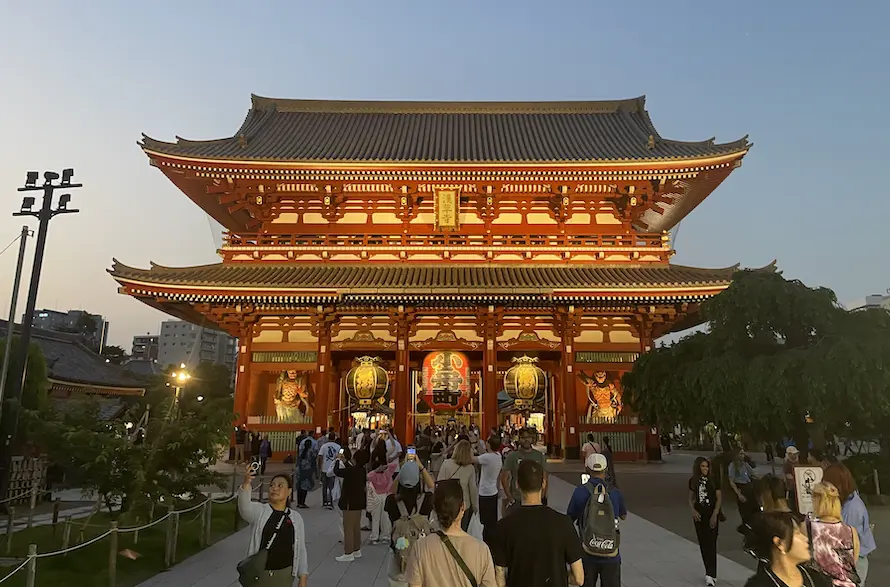
.png)



